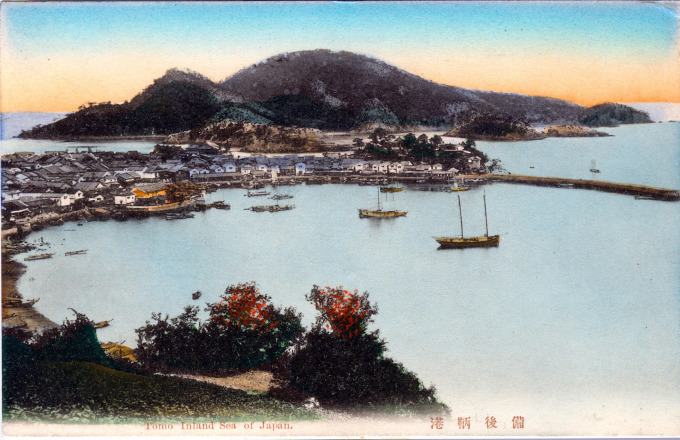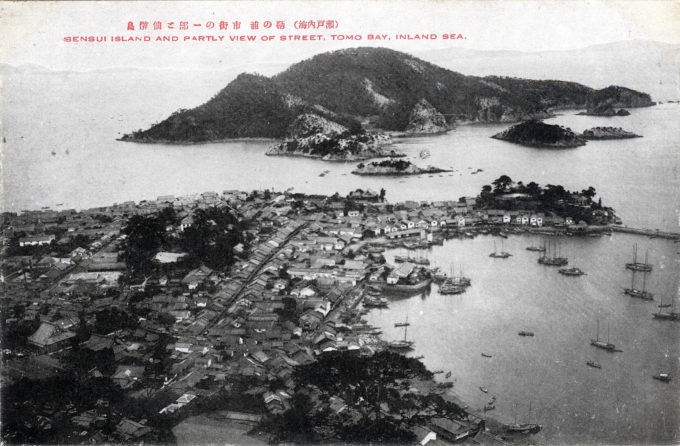
“Tomo, Inland Sea of Japan,” c. 1910. Tomonoura’s unique circular harbor has been preserved even after more modern port facilities have been built since 1868. But, a 1983 plan to build a bridge across the port area – that would have obliterated Tomonoura’s fabled view – was turned back by popular local opposition and an international outcry.
“Tomonoura, nestled in its half-moon bay overlooking the Seto Inland Sea National Park, has been inspiring poets and artists for centuries. One thousand years before I-pan-on’s visit, eight poems about the town were included in the Man-yoshu (an 8th-century collection of Japanese poems), including this one by Otomo no Tabito:
Whenever I see that juniper on the rocky beach of Tomonoura,
I will remember my wife who used to see the tree with me.
How can I forget her?– Otomo no Tabito (665-731)
“In 1929, Tomonoura’s seascape inspired blind koto maestro Michio Miyagi (1894-1956) to compose ‘Haru no Umi’ (‘The Sea in Spring’). More recently, in 2008, anime director Hayao Miyazaki chose the town as the setting for his film Gake no Ue no Ponyo (‘Ponyo on the Cliff by the Sea’), after spending two months at a house overlooking the port.“Then in September 2012, Hollywood director James Mangold and the cast of The Wolverine, including actor Hugh Jackman, descended on the town to shoot some scenes for the film. Mangold chose Tomonoura out of more than 50 villages throughout the country because it evoked the beatific Japan he knew from the films of Yasujiro Ozu. Jackman even went fishing in the bay and tweeted photos of himself with the iconic 17th-century Joyato Stone Lighthouse in the background.
“It seems that 1,300 years after Otomo penned his poem, Tomonoura’s timeless view still bewitches everyone who sees it.”
– “Tomonoura: lost in a storied landscape”, The Japan Times, November 15, 2014
From the wiki: “Tomonoura has been a prosperous port since ancient times. Its unique circular harbor was preserved even after modern port facilities were introduced. Eight poems about Tomonoura are to be found in the oldest collection of Japanese poems, the Man’yōshū, compiled in the Tenpyō-hōji era.”


